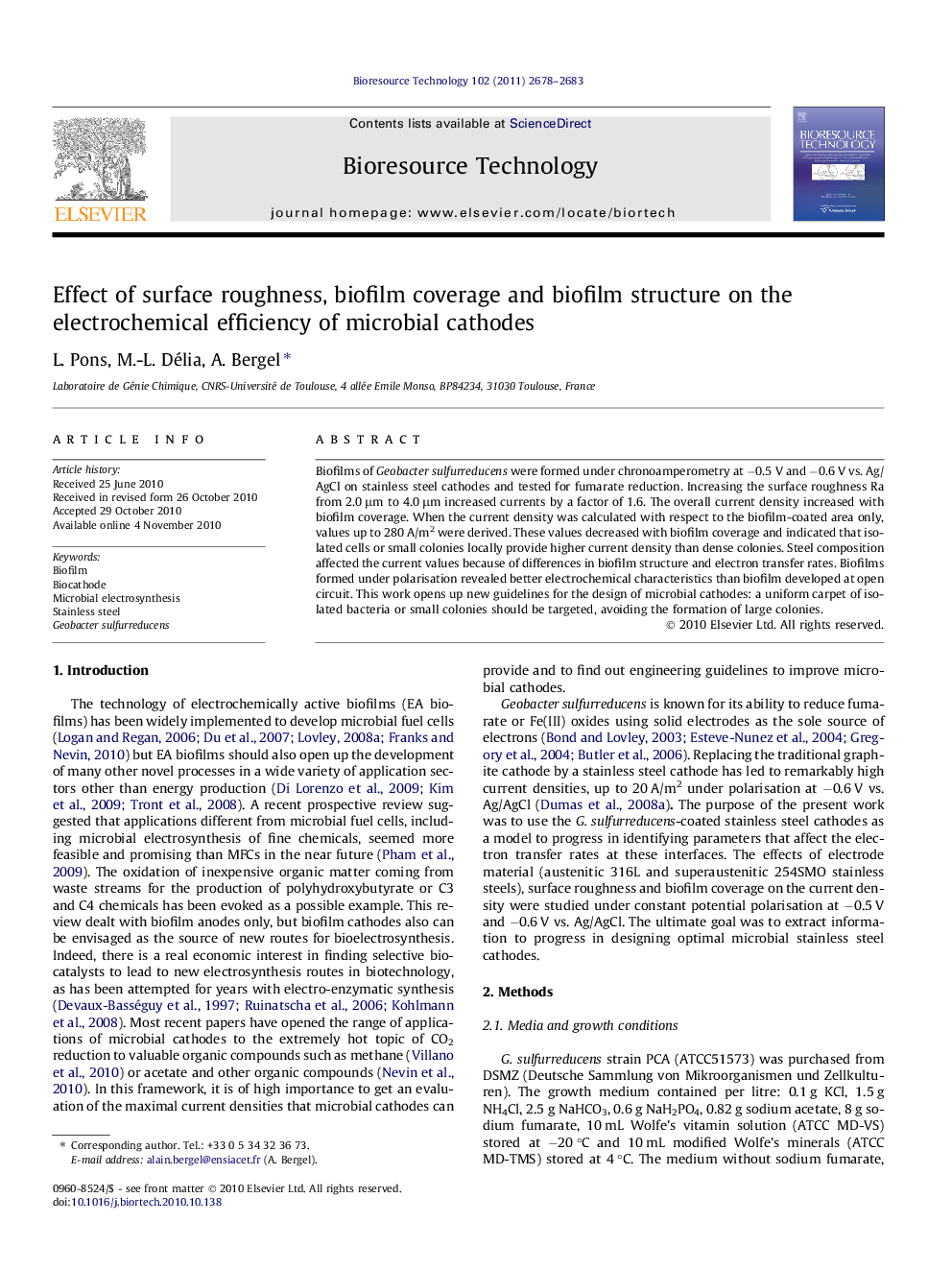| Article ID | Journal | Published Year | Pages | File Type |
|---|---|---|---|---|
| 10395424 | Bioresource Technology | 2011 | 6 Pages |
Abstract
Biofilms of Geobacter sulfurreducens were formed under chronoamperometry at â0.5 V and â0.6 V vs. Ag/AgCl on stainless steel cathodes and tested for fumarate reduction. Increasing the surface roughness Ra from 2.0 μm to 4.0 μm increased currents by a factor of 1.6. The overall current density increased with biofilm coverage. When the current density was calculated with respect to the biofilm-coated area only, values up to 280 A/m2 were derived. These values decreased with biofilm coverage and indicated that isolated cells or small colonies locally provide higher current density than dense colonies. Steel composition affected the current values because of differences in biofilm structure and electron transfer rates. Biofilms formed under polarisation revealed better electrochemical characteristics than biofilm developed at open circuit. This work opens up new guidelines for the design of microbial cathodes: a uniform carpet of isolated bacteria or small colonies should be targeted, avoiding the formation of large colonies.
Related Topics
Physical Sciences and Engineering
Chemical Engineering
Process Chemistry and Technology
Authors
L. Pons, M.-L. Délia, A. Bergel,
